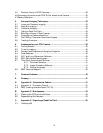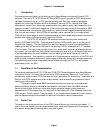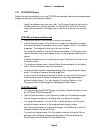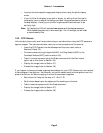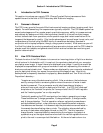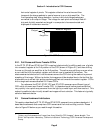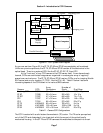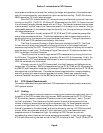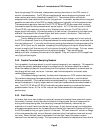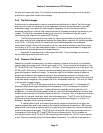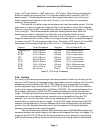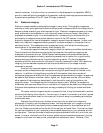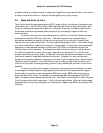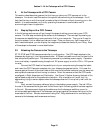Section 2 - Introduction to CCD Cameras
Page 8
using passive radiators and a small fan, making the design and operation of the heads simple
and not inconvenienced by requirements for liquid recirculation cooling. The ST-9E includes
SBIG's secondary TE/Liquid cooling booster.
Since the CCD is cooled below 0°C, some provision must be made to prevent frost from
forming on the CCD. The ST-7E, ST-8E and ST-9E cameras have the CCD/TE Cooler mounted
in a windowed hermetic chamber sealed with an O-Ring. The hermetic chamber does not need
to be evacuated, another "ease of use" feature we employ in the design of our cameras. Using a
rechargeable desiccant in the chamber keeps the humidity low, forcing the dew point below the
cold stage temperature.
Other elements in the self contained ST-7E, ST-8E and ST-9E include the preamplifier
and an electromechanical shutter. The shutter makes taking dark frames a simple matter of
pushing a button on the computer and provides streak-free readout. Timing of exposures in
ST-7E, ST-8E and ST-9E cameras is controlled by this shutter.
The Clock Drivers and Analog to Digital Converter interface to the CCD. The Clock
Drivers convert the logic-level signals from the microcontroller to the voltage levels and
sequences required by the CCD. Clocking the CCD transfers charge in the array and is used to
clear the array or read it out. The Analog to Digital Converter (A/D) digitizes the data in the
CCD for storage in the Host Computer.
The microcontroller is used to regulate the CCD's temperature by varying the drive to
the TE cooler. The external Power Supply provides +5V and ±12V to the cameras. Finally, the
cameras contain a TTL level telescope interface port to control the telescope and the optional
CFW-6A motorized color filter wheel.
Although not part of the CCD Camera itself, the Host Computer and Software are an
integral part of the system. SBIG provides software for the ST-7E, ST-8E and ST-9E cameras for
the IBM PC and Compatible computers (all cameras, DOS and Windows) and the ST-7E/8E are
also supported by the Macintosh. The software allows image acquisition, image processing,
and auto guiding with ease of use and professional quality. Many man-years and much
customer feedback have gone into the SBIG software and it is unmatched in its capabilities.
2.4. CCD Special Requirements
This section describes the unique features of CCD cameras and the special requirements that
CCD systems impose.
2.4.1. Cooling
Random readout noise and noise due to dark current combine to place a lower limit on
the ability of the CCD to detect faint light sources. SBIG has optimized the ST-7E, ST-8E and
ST-9E to achieve readout noises below 20 electrons rms for two reads (light - dark). This will
not limit most users. The noise due to the dark current is equal to the square root of the
number of electrons accumulated during the integration time. For these cameras, the dark
current is not significant until it accumulates to more than 280 electrons. Dark current is
thermally generated in the device itself, and can be reduced by cooling. All CCDs have dark
current, which can cause each pixel to fill with electrons in only a few seconds at room
temperature even in the absence of light. By cooling the CCD, the dark current and
corresponding noise is reduced, and longer exposures are possible. In fact, for roughly every
5°C of additional cooling, the dark current in the CCD is reduced to half. The ST-7E and ST-8E



